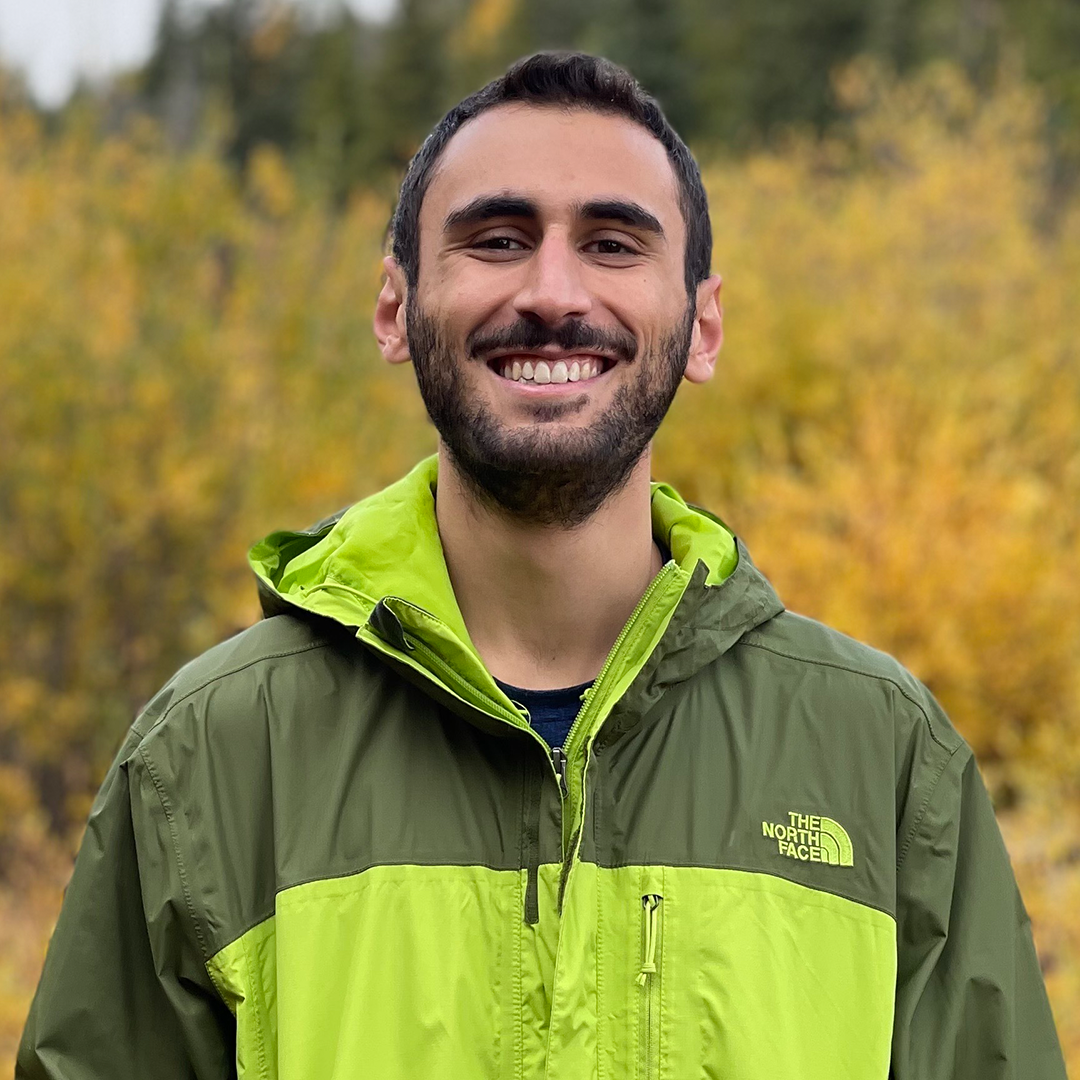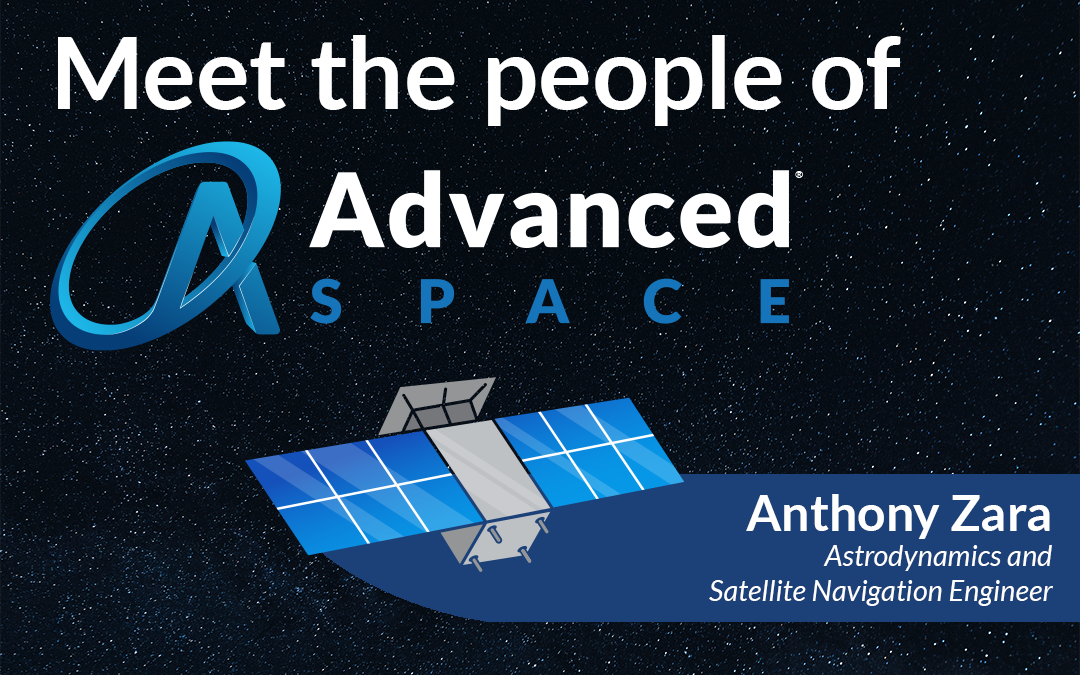
What is the most interesting part of your current project?
I would be hard-pressed to say anything other than the Cislunar Autonomous Positioning System (CAPS) since that has been where I have focused the majority of my time and effort at Advanced Space. This technology has the opportunity to revolutionize how navigation at the Moon and beyond works for the future of space exploration by reducing navigation and communication burdens on Earth ground stations with its decentralized and cooperative approach. Developing a totally novel technology is always an interesting project; the fact that we currently have CAPSTONE up there at the Moon gathering real data in support of this technology makes it an engineer’s dream.
In my stint at Advanced Space, I have taken on the responsibility for running our CAPS payload onboard CAPSTONE, which has given me invaluable experience not only in spacecraft operations but also learning about the strengths and limitations of the CAPS technology and most importantly how to improve it for deployment on future missions.
My second-favorite project is definitely the contract we have with NASA to support mission design and navigation efforts for the Gateway program, which is slated to be the first operational space station in orbit of the Moon. CAPSTONE is of course flying the same orbit that Gateway will in the not-so-distant future, so taking the lessons learned from navigating CAPSTONE and applying them to Gateway navigation has been a very rewarding endeavor. Having the ability to support the first steps of lunar colonization is something many people only dream about, and it is an honor and a privilege to be there myself.
What are the unique challenges Advanced Space solves for the diverse types of missions?
Advanced Space brings to the table extensive knowledge of how to plan and operate missions in the deep-space environment, which in turn improves our ability to do the same near Earth. Wholly different approaches to mission design and navigation are required when flying spacecraft outside of Geostationary orbit, which previously only places like NASA’s Jet Propulsion Laboratory have taken on. Having this ability in the commercial sector fills a niche for space mission capabilities that has since been largely unaddressed, and along with the new commercial space race to the Moon, puts us in a uniquely advantageous position to support a wide variety of missions given the success of CAPSTONE.
You’ve been an Astrodynamics and Satellite Navigation Engineer for multiple projects at Advanced Space, including CAPSTONE. How does that experience prepare you to support other missions?
There are only so many things that you can learn in graduate school. Being in industry is a whole other animal; until you get your hands on projects ranging from small business innovation research (SBIR) contracts to actually operating a spacecraft flying around the Moon, it is difficult to truly grasp the amount of effort that goes into mission formulation, development, and execution. Advanced Space has given me invaluable experience in all aspects of what it takes to fly a successful space mission, although I certainly have much more to learn before I’m ready to spearhead something like that.
My personal role focuses mainly on navigation, and at first information was somewhat compartmentalized between all of my projects. As I have matured into the company, the concepts and lessons learned from each project, from LEO constellation navigation to supporting the NASA Gateway team in preparation to putting a space station at the Moon, all seem to blend together to form a cohesive knowledge base that allows me to approach new projects and drive them to success more effectively and rapidly.
What is the most interesting part of your current project?
Having the ability to analyze data from the ongoing CAPS experiment at the Moon is definitely much cooler than anything I would have imagined for myself at this stage of my career. Lots of work went into successfully demonstrating that we could do crosslink ranging (inter-spacecraft range and range-rate measurements) at the Moon given both the limitations of CAPSTONE’s size (it’s roughly the size of a microwave oven) and the legacy technology onboard LRO, which was not designed for performing such a feat. Some clever engineering had to take place to effectively “fool” LRO’s radio communications suite into thinking that CAPSTONE is an Earth ground station in order for us to be able to compute the proper navigation observables needed to support CAPS. Iteratively improving this system on-orbit from lessons learned in each opportunity has been an incredible thing to take charge of and is nothing but a feat of incredible teamwork and collaboration between Advanced Space, Terran Orbital, NASA Goddard, and Tethers Unlimited.
How did you end up working at Advanced Space?
It’s quite a long story really. In 2019, I was an undergraduate at the University of Missouri, with a major in mechanical engineering and a minor in aerospace engineering. I had taken several space-focused classes at Mizzou from Dr. Craig Kluever and was inspired to pursue a career in the space industry and would not settle for anything less. At the time, all of my internship experience had been in the HVAC industry, so when I would go to career fairs and apply to aerospace engineer positions, I would get the same reply every time: “Why don’t you just continue working in HVAC”? Needless to say, I was both unhappy and undeterred by this answer. With Dr. Kluever’s advice I began academic research with Dr. Ming Xin at Mizzou regarding Space Domain Awareness (SDA) while applying to graduate schools renowned for their expertise in aerospace engineering. I reached out to Dr. Marcus Holzinger at CU Boulder who also does some fantastic SDA research, and with his help I was accepted for a masters program at the school.
Onward to CU Boulder, my now fiancé and I moved out to Colorado in 2020 in the midst of the pandemic to pursue my master’s degree. It was simultaneously incredibly difficult and vastly rewarding, knowing that I was finally in full pursuit of my goal to contribute to the future of space exploration. Shortly thereafter, I found myself under the mentorship of the same Marcus Holzinger who helped me get into the school in the first place, and he offered an incredible resource of knowledge and guidance as I pursued academic research in machine learning-augmented SDA algorithms in his laboratory. Still, it was difficult to land an internship in an aerospace engineering company with my prior experience. I applied for internships at numerous aerospace companies throughout Colorado and was rejected by every last one until Advanced Space gave me a shot at a summer internship during my second year in graduate school. At this point, my capabilities as an aerospace engineer really began to blossom, and I guess they liked me enough to keep me around for the long haul. I am incredibly thankful for the opportunity, and am glad I took it as I have already been able to play a large role in developing some of the most cutting-edge technologies in the space industry in such a short period of time.
What’s unique about Advanced Space?
Advanced Space is great because while we work on large, impactful projects, we still have a very personal feel to the company; I know everyone at the company, and regularly joke around with our CEO. It is very much a “work hard, play hard” type of environment. When we put our heads down and commit to the grind of a project, we get spectacular things done as exemplified by flying the first commercial Lunar mission of the Artemis program. When the hard work is done, we all enjoy happy hours together and go on fun company outings or just play some ping-pong and talk smack on the leaderboard. The size of the company allows us to be incredibly agile, while also giving young engineers like me the opportunity to gain a wealth of experience by leading projects early in their careers, which would not be possible for me at other larger companies.
What would you say is unique about your background?
I used to design ductwork for HVAC retrofits and size rooftop air-conditioning units for large warehouses. While I certainly appreciate the necessity of that work (especially as I sit here in my air conditioning), it was not the career path I wanted to make for myself. It was incredibly difficult to make the switch, and it required an extra year of undergrad and years of graduate school to get to where I am, but in the long run hard work and determination always wins. I especially want to thank my fiancé Kate who moved out to Colorado with me in 2020, where we both knew no one and had zero family just for me to pursue my career dreams. I’d say it’s working out pretty well so far!
